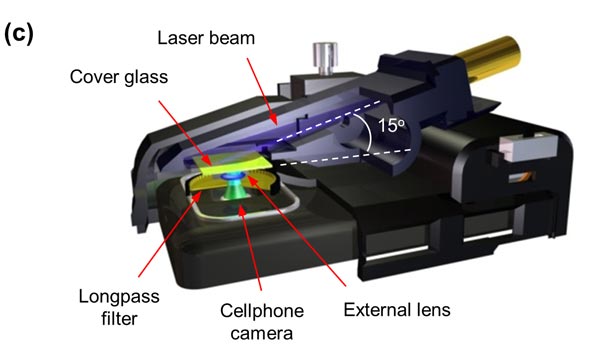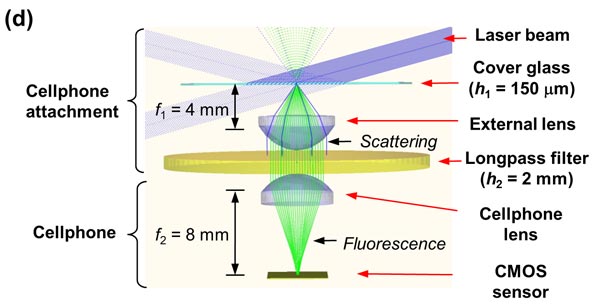Recently smartphone makers have put a lot of research and development in boosting their devices imaging capabilities. However their megapixel, ultrapixel and BIONZ sensor upgrades are all knocked into a cocked hat by a new “cellphone-based imaging platform” developed by the UCLA. A team of researchers from the Californian university have developed a smartphone microscope capable of detecting viruses and bacteria which usually requires “bulky and expensive microscopes and lab equipment”.

The team of UCLA researchers was headed up by Aydogan Ozcan, a professor of electrical engineering and bioengineering. “This cellphone-based imaging platform could be used for specific and sensitive detection of sub-wavelength objects, including bacteria and viruses and therefore could enable the practice of nanotechnology and biomedical testing in field settings and even in remote and resource-limited environments,” Ozcan said. “These results also constitute the first time that single nanoparticles and viruses have been detected using a cellphone-based, field-portable imaging system.”

Interestingly the microscope is fabricated using a 3D printer. It uses a colour filter, an external lens and a laser diode to light up the subject under examination. In testing Ozcan’s team managed to detect single human cytomegalovirus (HCMV) particles using the device attached to a smartphone, as pictured. Such virus particles measure just 150 to 300nm in diameter. In ideal conditions the same microscope attachment was able to resolve particles of 90nm in size. (The results were verified using lab based imaging devices such as a scanning electron microscope.) To understand the magnification compare these measurements to the thickness of a human hair, at 100,000nm.

Ozcan’s smartphone microscope attachment is eminently portable and weighs in at only around 200g in its present state. The researchers chose a Nokia 808 PureView smartphone as the camera component in their tests.













